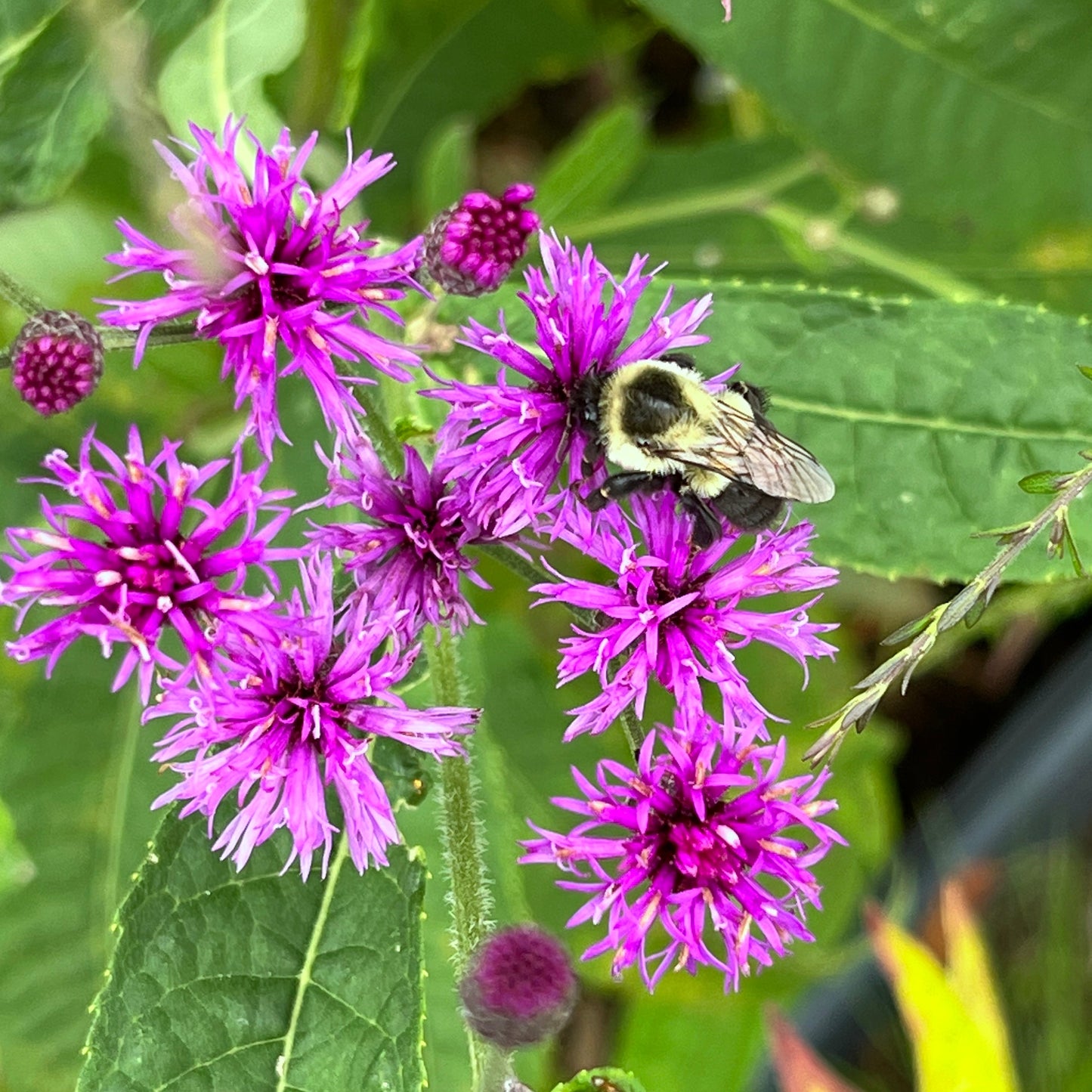Tall ironweed
Vernonia gigantea
Vernonia gigantea
Couldn't load pickup availability
Sun/shade: Full sun to part shade
Soil moisture: Medium to wet
Height: 5-8'
Flowering period: August
Deer resistance: High
With flowers that are among the most intensely purple of any in the state, tall ironweed makes a distinctive contribution to the color palette of the native plants garden. Adding to the plant’s appeal is its ability to draw in butterflies. During the month of August when tall ironweed is in flower, one may observe that swallowtail butterflies flutter from one cluster of searing purple blooms to another, seemingly oblivious to the other flowers of the meadow. Their appreciation may be due to the high concentration of amino acids contained in tall ironweed’s nectar. Research indicates that butterflies favor amino acid rich nectar, and such nectar may confer reproductive benefits, such as increased egg counts and larval mass. In addition to butterflies, tall ironweed also attracts bee flies, skippers, and various bees, primarily of the long-tongued variety.
Growing best under full sun to partial shade, tall ironweed is adapted to a wide range in soil moisture, from moderately wet to moderately dry. Within its native NE Ohio range, tall ironweed can frequently be found in meadows, along forest edges, and along roadsides, often in association with goldenrods, late boneset, and wingstem. These species all bloom around the same time and make good garden-mates for a naturalized look. The association of tall ironweed with wingstem is especially renowned, in part due to this pairing’s’ gorgeous purple and yellow color motif, but also due to the close resemblance between the two species when not in bloom. A good competitor, tall ironweed spreads by means of underground stems, attains a height of 3 – 7 feet, and is avoided by deer and other browsing mammals.
References: 1,2,3,4,5,6,7,8,9,10.
Photo 1 by Julie Slater. Photo 2 by Alyssa Zearley.



